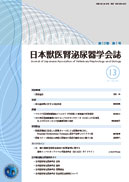Volume 13, Issue 1
Displaying 1-8 of 8 articles from this issue
- |<
- <
- 1
- >
- >|
-
2021Volume 13Issue 1 Pages 3-6
Published: 2021
Released on J-STAGE: December 12, 2021
Download PDF (337K)
-
2021Volume 13Issue 1 Pages 7-17
Published: 2021
Released on J-STAGE: December 12, 2021
Download PDF (3566K)
-
2021Volume 13Issue 1 Pages 18-26
Published: 2021
Released on J-STAGE: December 12, 2021
Download PDF (4770K) -
2021Volume 13Issue 1 Pages 27-34
Published: 2021
Released on J-STAGE: December 12, 2021
Download PDF (4770K)
-
2021Volume 13Issue 1 Pages 35-41
Published: 2021
Released on J-STAGE: December 12, 2021
Download PDF (3498K) -
2021Volume 13Issue 1 Pages 42-45
Published: 2021
Released on J-STAGE: December 12, 2021
Download PDF (1144K)
-
2021Volume 13Issue 1 Pages 46-63
Published: 2021
Released on J-STAGE: December 12, 2021
Download PDF (1219K) -
2021Volume 13Issue 1 Pages 64-85
Published: 2021
Released on J-STAGE: December 12, 2021
Download PDF (964K)
- |<
- <
- 1
- >
- >|
